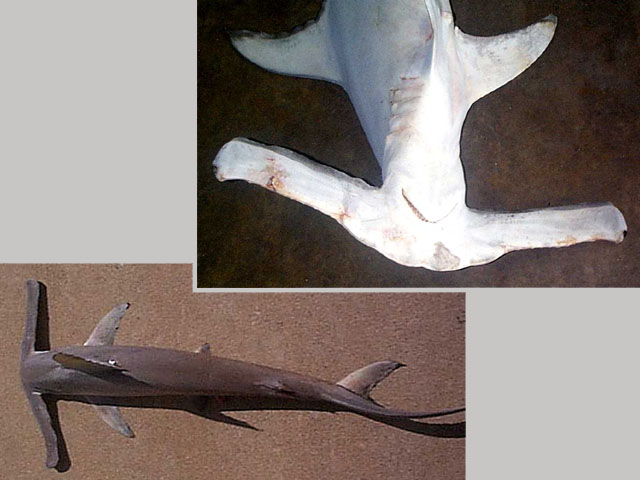| Sphyrnidae (Hammerhead, bonnethead, or scoophead sharks) |
| 186 cm TL (male/unsexed) |
|
benthopelagic; brackish; marine, amphidromous |
| Indo-West Pacific: Persian Gulf to the Philippines, north to China, south to Australia. |
|
Dorsal spines (total): 0-0; Dorsal soft rays (total): 0-0; Anal spines: 0-0; Anal soft rays: 0-0. Grey or grey-brown above, paler below. Expanded lateral blades of head very narrow and wing-like, with a series of small bumps along edges in front of nostrils; width across head 40 or 50% of total length. Nostrils enormously expanded, each nearly 2 times the mouth head (Ref 13562). |
| Found in shallow water on continental and insular shelves (Ref. 244). Enters estuaries (Ref. 4832). Feeds mainly on small teleost fishes but also takes crustaceans and cephalopods (Ref. 13562). Viviparous (Ref. 50449), with 6 to 25 pups in a litter (Ref. 6871). Has a remarkable wing-shaped head which is nearly or quite half of its body length, the function of which is uncertain, maybe for maneuvering or for increasing the surface area of some of the sense organs (Ref. 244). Probably harmless to people (Ref. 13562). Caught commonly, but in low numbers, by inshore gillnet fisheries. Particularly common in catches off Kalimantan (Ref.58048). Probably a common fisheries species where it occurs (Ref. 13562). Meat utilized for human consumption; liver is a source of vitamin oil (Ref. 244). Offal probably utilized for fishmeal (Ref. 13562). Reported to reach 300 cm TL (Ref. 58784). |
|
Endangered (EN); Date assessed: 18 February 2015 (A2d+3d) Ref. (130435)
|
| harmless |
Source and more info: www.fishbase.org. For personal, classroom, and other internal use only. Not for publication.
